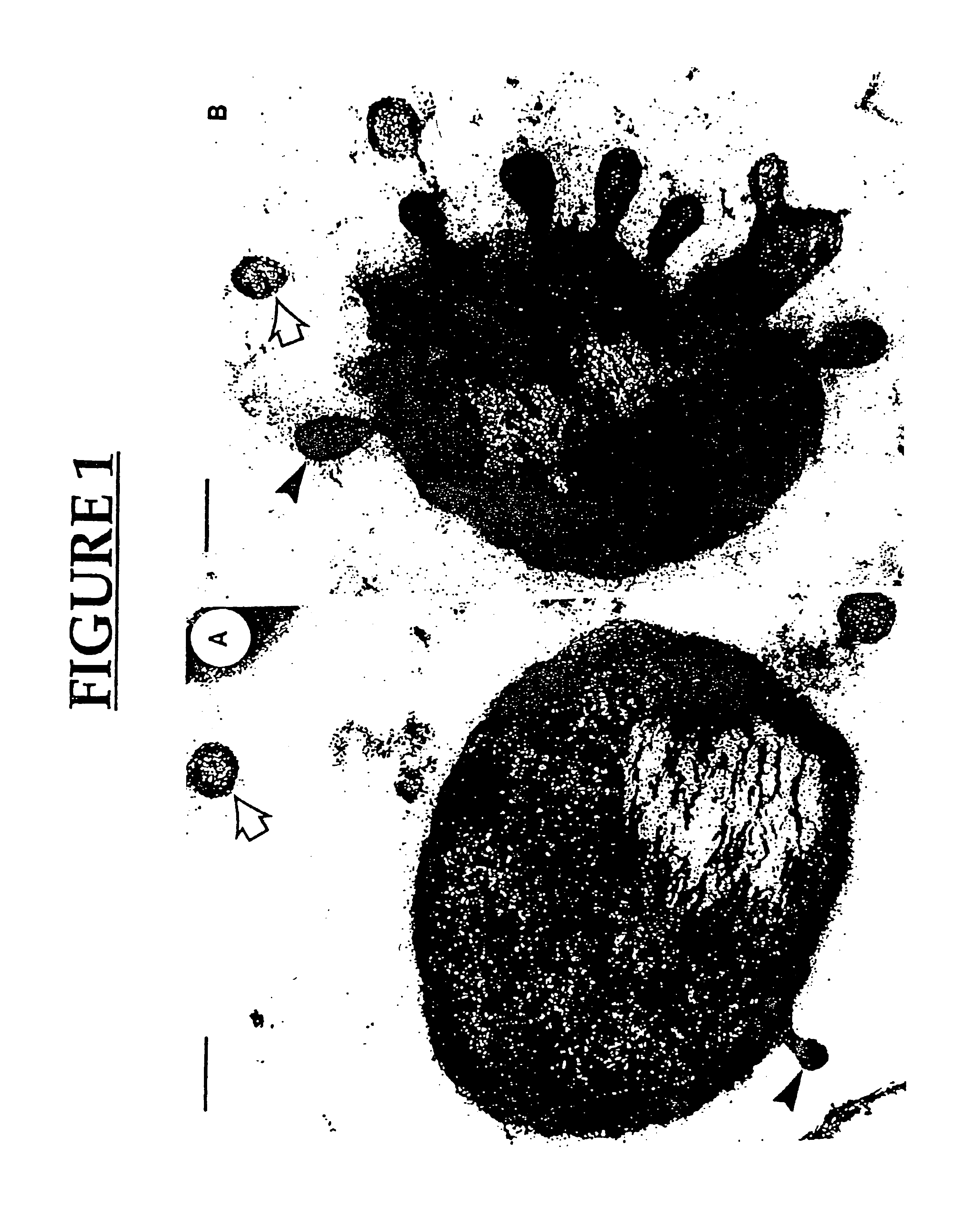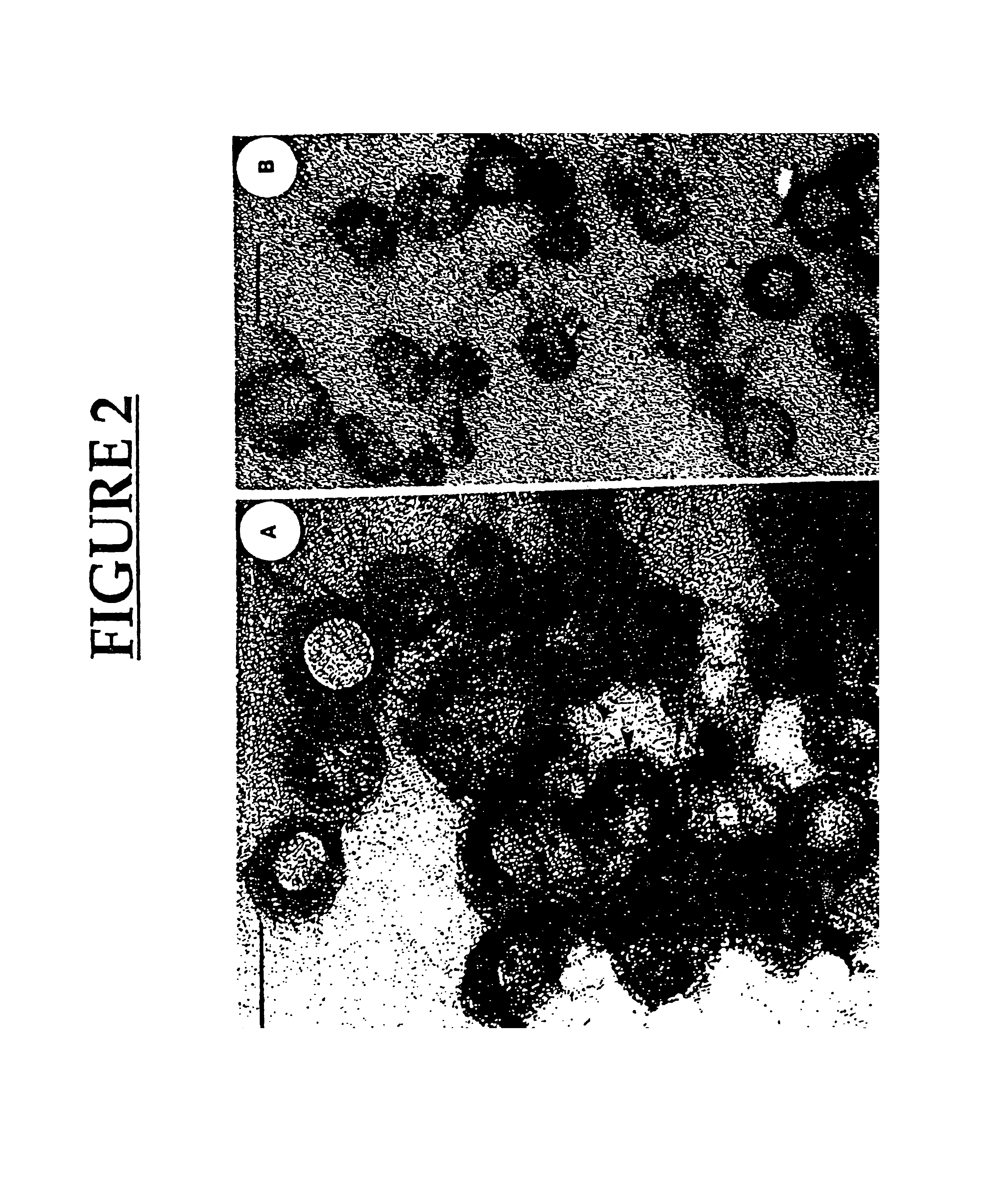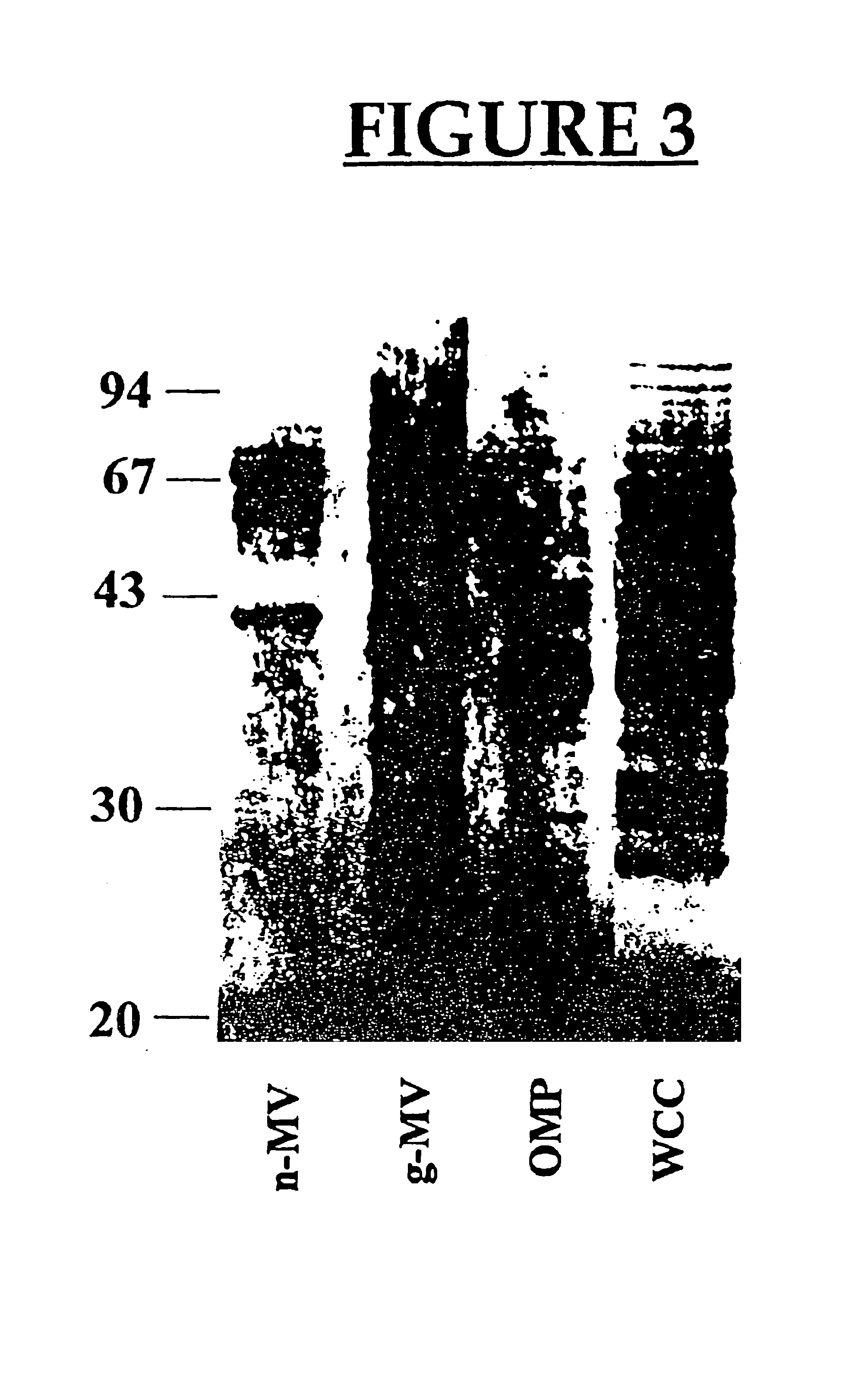Vaccines and pharmaceutical compositions using membrane vesicles of microorganisms, and methods for preparing same
a technology of membrane vesicles and pharmaceutical compositions, which is applied in the field of vaccines and pharmaceutical compositions using membrane vesicles of microorganisms, and the methods for preparing sam
- Summary
- Abstract
- Description
- Claims
- Application Information
AI Technical Summary
Benefits of technology
Problems solved by technology
Method used
Image
Examples
example 1
Preparation and Characterization of the Membrane Vesicles (MVs)
[0158]The following materials and methods were utilized in the investigations outlined in Example 1:
[0159]Bacterial strains and growth conditions. P. aeruginosa strain H103 and ATCC 19660 were grown in Mueller-Hinton broth (MHB) to the early stationary growth phase (ca. 108 CFU / ml) on an orbital shaker at 37° C. with an agitation rate of 125 rpm. To support the production of PLC, 0.2% (w / v) choline (the [2-hydroxy methyl] tri-methyl ammonium chloride salt; Sigma Chemical Co., St. Louis, Mo.) was added to the culture medium (Shortage V. D. et al., Mol. Microbiol. 6:863-871, 1992). Strain ATCC 19660 was used to detect elastase and protease activity, as the amounts produced by this strain was found to be higher than H 103 under the culture conditions used in the study.
[0160]Antibiotic susceptibility test. The Minimum Inhibitory Concentrations (MICs) of gentamicin were determined by dilution in MHB. The MICs for strains H 10...
example 2
Integration of the MVs Membrane with Carrier Strain
[0192]The following materials and methods were utilized in the investigations outlined in Example 2:
[0193]Bacterial strains and growth conditions. P. aeruginosa H 103 (Kadurugamuwa, J. L., et al., J. Bacteriol. 175:5798-5805, 1993), P. aeruginosa PAO1 serotype 05, Shigella flexneri M90T (Kadurugamuwa, J. L., et al. 1991, Infect. Immun. 59:3463-3471), Escherichia coli DH5α, (Kadurugamuwa, J. L., et al., J. Bacteriol. 175:5798-5805, 1993) and Salmonella typhi Ty21a (Swiss Serum and Vaccine Instituter, Berne, Switzerland) were grown in Trypticase soy broth to early stationary phase on an orbital shaker at 37° C. with an agitation rate of 125 rpm.
[0194]Isolation of Membrane vesicles (MV). MVs from one liter of P. aeruginosa H 103 and Shigella flexneri M90T were isolated as described above.
[0195]Integration of MV into attenuated strains. Exponential-growth-phase cultures (E. coli DH5α, and S. typhiTy21a) were diluted in phosphate buffere...
example 3
Predatory Role on Other Bacteria and Drug Delivery System
[0202]The following materials and methods were utilized in the investigations outlined in Example 3.
[0203]Bacterial strains and growth conditions. P. aeruginosa H 103, (Kadurugamuwa, J. L., et al., 1993, J. Bacteriol. 175:5798-5805 1) Staphylococcus aureus Newman D2C (Sigma), Escherichia coli K12, were grown in Trypticase soy broth to early stationary phase on an orbital shaker at 37° C. with an agitation rate of 125 rpm.
[0204]Isolation of MV. MVs from one liter of P. aeruginosa H 103 were isolated as described above.
[0205]Bacteriolytic activity. The lytic activity of MVs from strain H103 was determined using S. aureus and E. coli as target organisms. Cells were suspended in 0.02 M Tris-HC1, pH 8.5 to produce a bacterial suspension of 108 CFU / ml. At zero time, gentamicin-induced MV (g-MV) or natural MV (n-MV) (50 μg protein) were added and incubated at 37° C. The lytic activity was followed by viable counting on trypticase soy...
PUM
| Property | Measurement | Unit |
|---|---|---|
| diameter | aaaaa | aaaaa |
| diameter | aaaaa | aaaaa |
| diameter | aaaaa | aaaaa |
Abstract
Description
Claims
Application Information
 Login to View More
Login to View More - R&D
- Intellectual Property
- Life Sciences
- Materials
- Tech Scout
- Unparalleled Data Quality
- Higher Quality Content
- 60% Fewer Hallucinations
Browse by: Latest US Patents, China's latest patents, Technical Efficacy Thesaurus, Application Domain, Technology Topic, Popular Technical Reports.
© 2025 PatSnap. All rights reserved.Legal|Privacy policy|Modern Slavery Act Transparency Statement|Sitemap|About US| Contact US: help@patsnap.com



